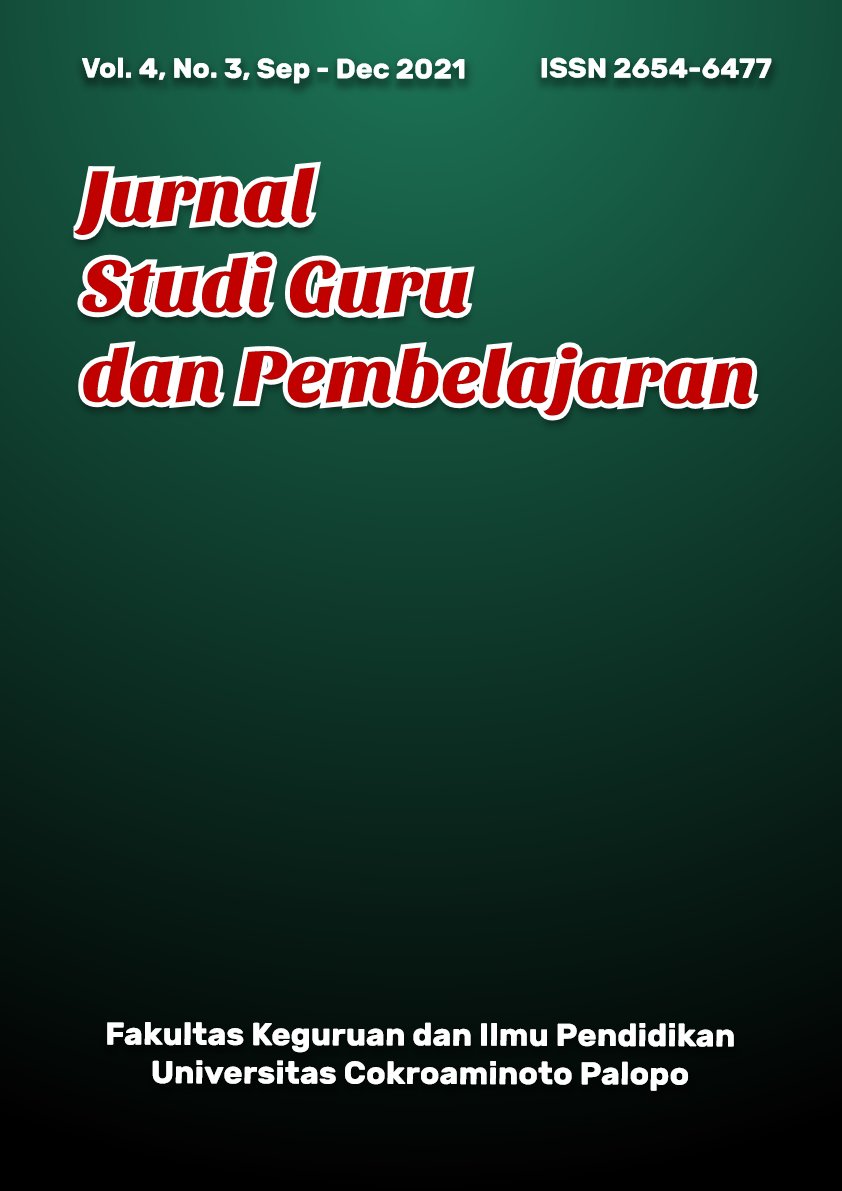Using Media in the Form of Favorite Movies to Teach Grammar and Vocabulary to Eleventh graders
DOI:
https://doi.org/10.30605/jsgp.4.3.2021.1212Keywords:
English, Grammar Improvement, Learning Media, Watching Favorite MoviesAbstract
The results of learning English for students in class XI high school are poor, particularly in terms of vocabulary and grammar. It is necessary to have learning media that is expected to improve the results of English learning in order to improve the learning process that has been going on so far. The goal of this study is to see if there is an increase in words and a focus on grammar in XI grade high school students' favorite film media. The author uses media in the form of favorite movie watching to see if there is an effect of favorite movie watching on improving vocabulary and grammar in English. The treatment is carried out by the author in accordance with the theory he has discovered. Because Class XI high school students have an interest in the media of watching favorite movies, Using Media by Watching Favorite Movies was chosen as a method of improving words and grammar. Following the researcher's treatment, it was discovered that giving the Favorite English film to class XI high school students had a significant impact on their ability to increase vocabulary and focus on grammar.
Downloads
References
Baker, L. (2006). Observation: A complex research method. Library Trends, 55(1), 171–189. DOI: https://doi.org/10.1353/lib.2006.0045
Horwitz, E. K., Horwitz, M. B., & Cope, J. (1986). Foreign language classroom anxiety. The Modern Language Journal, 70(2), 125–132. DOI: https://doi.org/10.1111/j.1540-4781.1986.tb05256.x
Jensen, A. R. (2001). Vocabulary and general intelligence. Behavioral and Brain Sciences, 24(6), 1109. DOI: https://doi.org/10.1017/S0140525X01280133
Lawson, M. J., & Hogben, D. (1996). The vocabulary‐learning strategies of foreign‐language students. Language Learning, 46(1), 101–135. DOI: https://doi.org/10.1111/j.1467-1770.1996.tb00642.x
Mistar, J., & Umamah, A. (2014). Strategies of learning speaking skill by Indonesian learners of English and their contribution to speaking proficiency. Teflin Journal, 25(2), 203–216. DOI: https://doi.org/10.15639/teflinjournal.v25i2/203-216
Sari, A., & Sugandi, B. (2015). Teaching English through English movie: Advantages and disadvantages. The Journal of English Literacy Education: The Teaching and Learning of English as a Foreign Language, 2(2), 10–15.
Sundqvist, P. (2009). Extramural English matters: Out-of-school English and its impact on Swedish ninth graders' oral proficiency and vocabulary (Doctoral dissertation, Karlstad University).
Watkins, J., & Wilkins, M. (2011). Using YouTube in the EFL classroom. Language Education in Asia, 2(1), 113–119. DOI: https://doi.org/10.5746/LEiA/11/V2/I1/A09/Watkins_Wilkins
Wibawa, B. (2003). Penelitian Tindakan Kelas. Jakarta: Dirjen Dikdasmen, 2572–2721.
Zhang, D. (2012). Vocabulary and grammar knowledge in second language reading comprehension: A structural equation modeling study. The Modern Language Journal, 96(4), 558–575. DOI: https://doi.org/10.1111/j.1540-4781.2012.01398.x
Downloads
Published
How to Cite
Issue
Section
License
In submitting the manuscript to the journal, the authors certify that:
- They are authorized by their co-authors to enter into these arrangements.
- The work described has not been formally published before, except in the form of an abstract or as part of a published lecture, review, thesis, or overlay journal.
- That it is not under consideration for publication elsewhere,
- That its publication has been approved by all the author(s) and by the responsible authorities – tacitly or explicitly – of the institutes where the work has been carried out.
- They secure the right to reproduce any material that has already been published or copyrighted elsewhere.
- They agree to the following license and copyright agreement.
License and Copyright Agreement
Authors who publish with JSGP agree to the following terms:
- Authors retain copyright and grant the journal right of first publication with the work simultaneously licensed under Creative Commons Attribution License (CC BY-SA 4.0) that allows others to share the work with an acknowledgement of the work's authorship and initial publication in this journal.
- Authors are able to enter into separate, additional contractual arrangements for the non-exclusive distribution of the journal's published version of the work (e.g., post it to an institutional repository or publish it in a book), with an acknowledgement of its initial publication in this journal.
- Authors are permitted and encouraged to post their work online (e.g., in institutional repositories or on their website) prior to and during the submission process, as it can lead to productive exchanges, as well as earlier and greater citation of published work.














